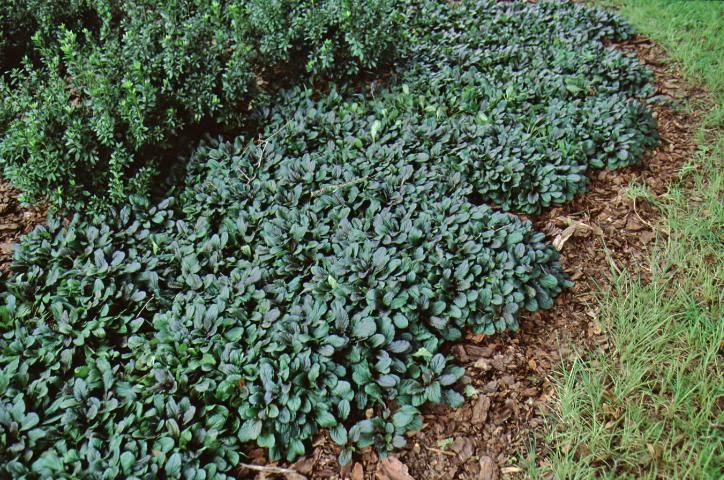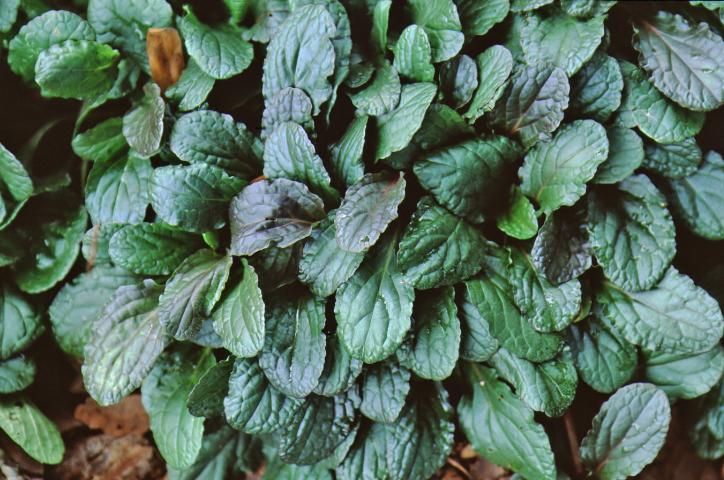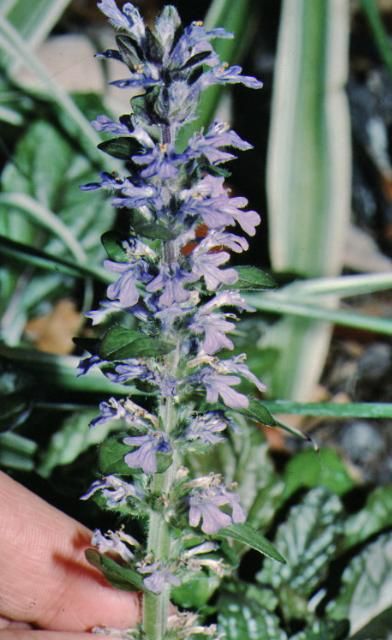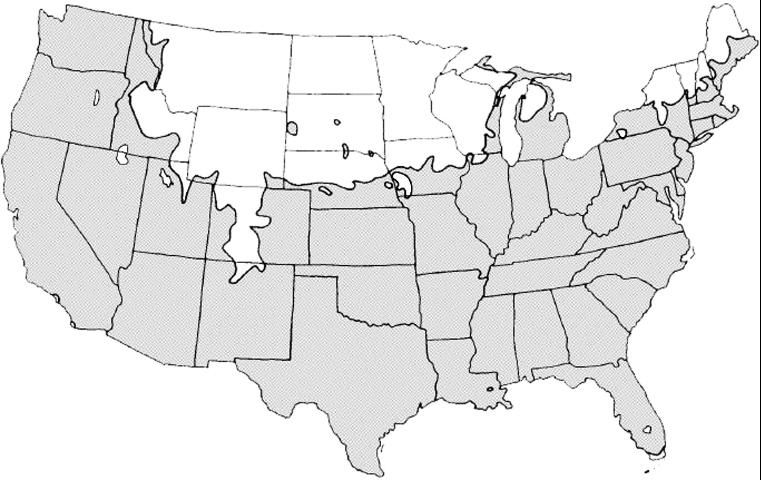Introduction
This ground-hugging groundcover produces a profusion of dark green to bronze- or purple-colored leaves in a flat rosette, spreading fairly quickly by runners or stolons. Plant on 6- to 12-inch centers for quick establishment of a thick ground cover. Six-inch-tall spikes of small blue flowers are produced in spring to early summer and are especially attractive when plants are massed together. There are selections with foliage variegated in green, white, red, yellow, and pink.

Credit: Edward F. Gilman, UF/IFAS

Credit: Edward F. Gilman, UF/IFAS

Credit: Edward F. Gilman, UF/IFAS
General Information
Scientific name: Ajuga reptans
Pronunciation: uh-JOO-guh REP-tanz
Common name(s): Common bugle, bugleweed, carpet bugleweed
Family: Lamiaceae
Plant type: ground cover; perennial; herbaceous
USDA hardiness zones: 4 through 10A (Figure 4)

Planting month for zone 7: year-round
Planting month for zone 8: year-round
Planting month for zone 9: year-round
Planting month for zone 10 and 11: year-round
Origin: native to Africa, temperate Asia, and Europe
Invasive potential: invasive and not recommended by UF/IFAS faculty (reassess in 10 years)
Uses: mass planting; container or above-ground planter; ground cover; edging
Availability: somewhat available, may have to go out of the region to find the plant
Description
Height: 0 to 1/2 feet
Spread: 1/2 to 1 feet
Plant habit: prostrate (flat)
Plant density: dense
Growth rate: slow
Texture: medium
Foliage
Leaf arrangement: basal rosette
Leaf type: simple
Leaf margin: undulate
Leaf shape: ovate
Leaf venation: pinnate
Leaf type and persistence: evergreen
Leaf blade length: 4 to 8 inches
Leaf color: purple or red; variegated
Fall color: no fall color change
Fall characteristic: not showy
Flower
Flower color: pink
Flower characteristic: spring-flowering
Fruit
Fruit shape: no fruit
Fruit length: no fruit
Fruit cover: no fruit
Fruit color: no fruit
Fruit characteristic: no fruit
Trunk and Branches
Trunk/bark/branches: not applicable
Current year stem/twig color: not applicable
Current year stem/twig thickness: not applicable
Culture
Light requirement: plant grows in part shade/part sun; plant grows in the shade
Soil tolerances: slightly alkaline; acidic; clay; sand; loam
Drought tolerance: moderate
Soil salt tolerance: poor
Plant spacing: 6 to 12 inches
Other
Roots: not applicable
Winter interest: no special winter interest
Outstanding plant: not particularly outstanding
Pest resistance: very sensitive to one or more pests or diseases which can affect plant health or aesthetics
Use and Management
Growing best in shady locations, bugleweed will tolerate full sun in the northern end of its range as long as it can be provided with moist, but not soggy, fertile soil. It looks best in small gardens or small spaces and in other enclosed areas where the tight foliage can cover the ground around or in front of small shrubs.
Available cultivars include: 'Multicoloris,' leaves mottled red, white, and yellow on green; 'Alba,' white flowers; 'Atropurpurea,' bronze foliage and blue flowers; 'Burgundy Glow,' new leaves bright burgundy-red, mature leaves cream/white and dark pink; 'Rubra,' rose flowers, more vigorous; 'Variegata,' grey-green leaves with cream markings.
Propagation is by division, rarely by seed.
Susceptible to nematodes on sandy soils.
Design Considerations
The low-growing habit and small leaves of the bugleweed cover the ground in a thick, lush layer of green, perfect for filling in among other plants in the landscape. Simple forms and light green or smooth foliage of companion plants will highlight the rough, scrubby texture of the bugleweed foliage. Clumping plants with larger glossy leaves or strap-blade leaves would also contrast well with the matting, low-growing form. The mass of green works well with different flower colors, but bright and light colors will show the best compared to the dark green and purple-colored foliage. Simple small or medium size flowers will contrast with the tiny foliage without adding too much detail. Colors in the variegated foliage varieties are primarily warm colors, contrasting flowers would include blues and purples or a simple color palette can be used by repeating the same warm colors with yellow, pink, or red flowers in companion plants.
Pests and Diseases
Crown rot can occur on soggy soils.